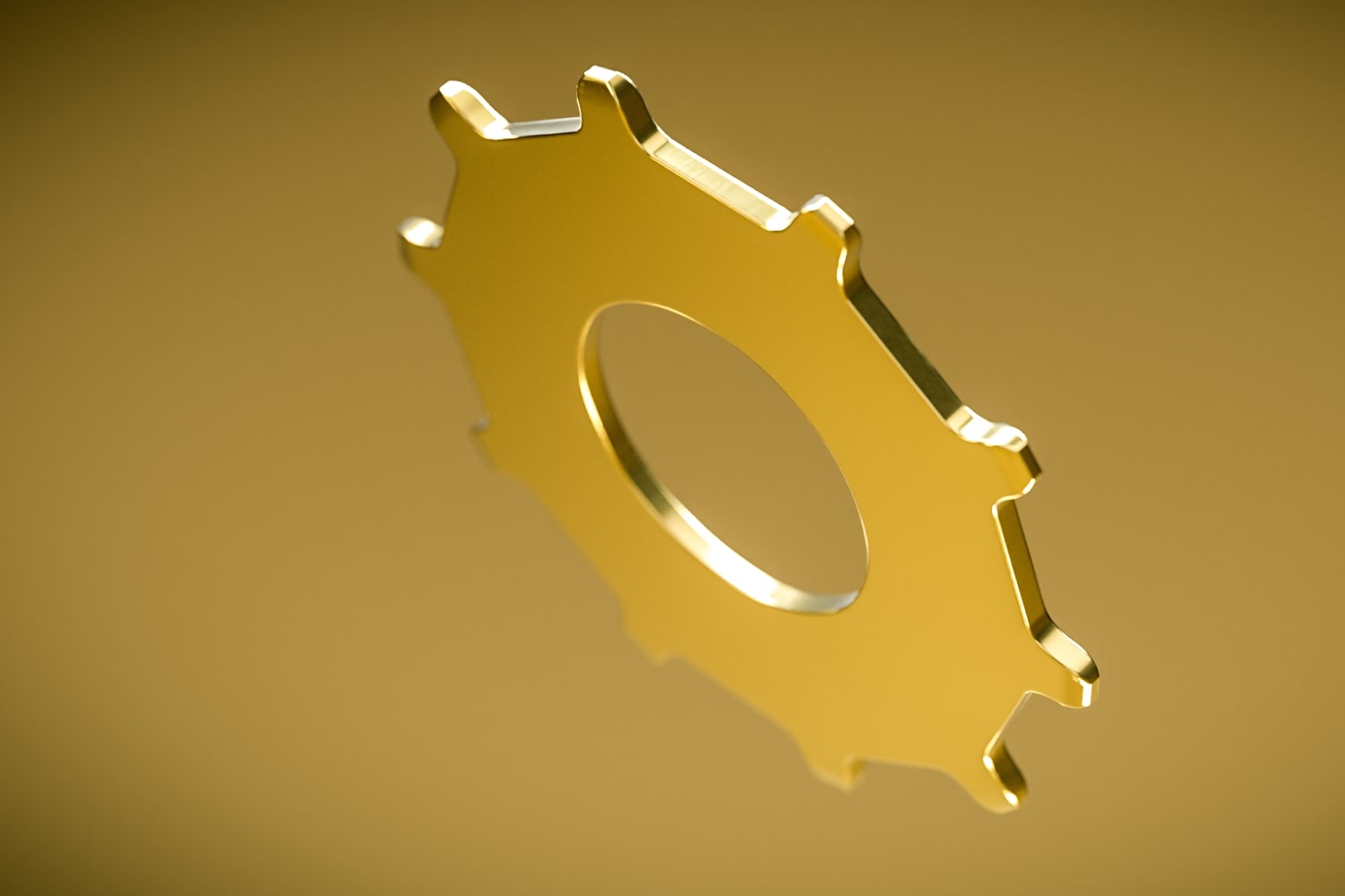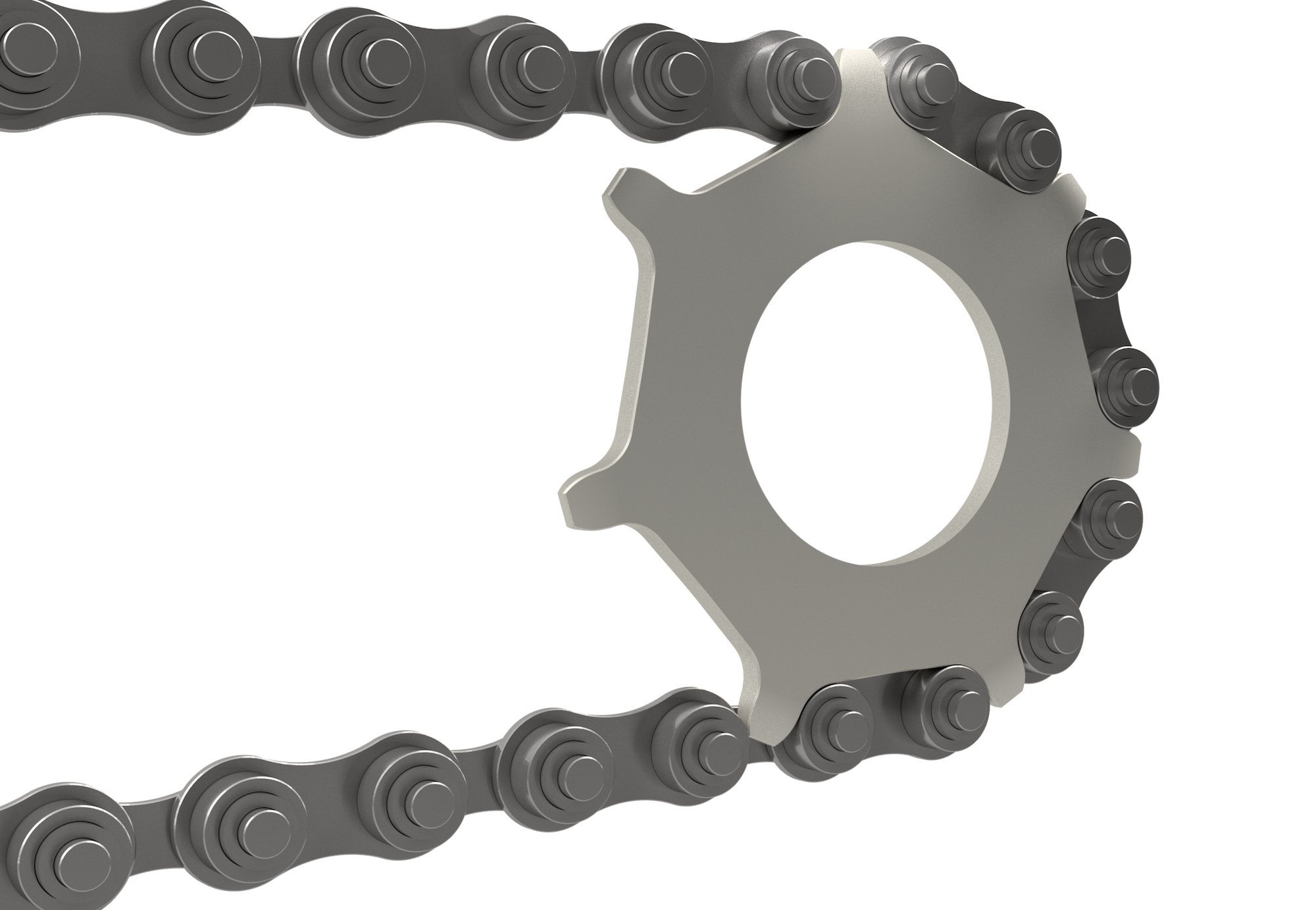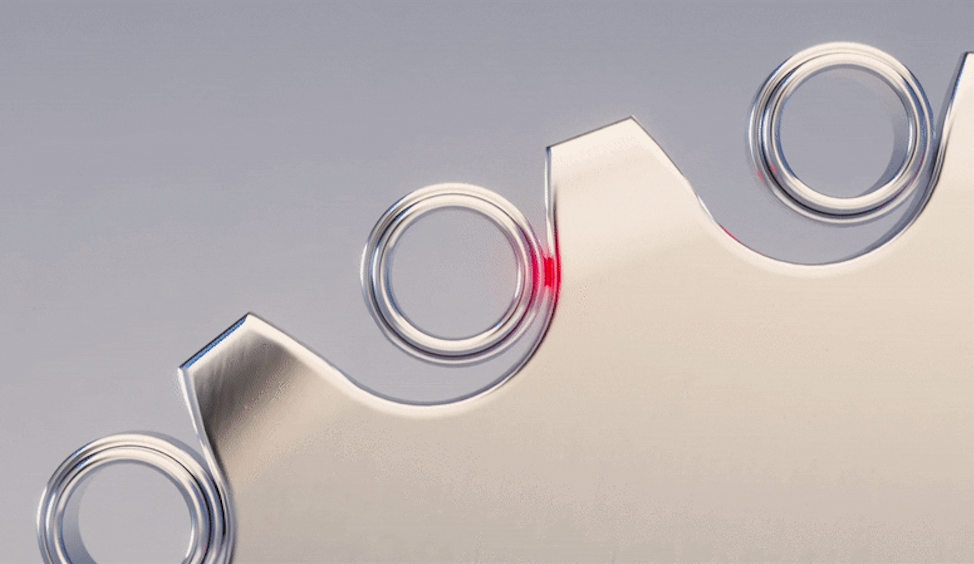New Motion Labs reinvents the sprocket and aims to showcase radical new drivetrain design at the Olympics
British engineering firm's tooth design claims to improve efficiency by one per cent and reduce wear by 30 per cent – and works with standard chains


British engineering company New Motion Labs has unveiled a radical new sprocket design that it claims increases efficiency, reduces wear and works with a standard roller chain.
New Motion Labs CEO and founder Marcel Fowler told Cycling Weekly that the technology is patented, has already been licensed to manufacturers and is available to preorder, and that his strategy is for it to be used in the velodrome at the Tokyo Olympics, with it moving into road cycling later.

What makes New Motion Labs’ design superior to the standard sprocket is a principle called dual engagement, according to Fowler.
“The real problem that we’re solving is that a roller chain’s rollers have to be made smaller than the arc of the gulley [between the teeth of a sprocket or chainring] so that it can disengage. This leads to these problems – relative movement and stress distribution. The major loss mechanisms are not from the sliding of the roller on the tooth but it’s actually internal to the chain. So it’s the bushes and the pins inside – the roller turning on the pin. It’s those losses that are the big ones.”

In order to reduce movement of the rollers between the teeth and improve stress distribution, New Motion Labs’ Enduo Evolve design uses a wider tooth profile and the sprocket contains half the number of teeth of a normal sprocket, which the company says facilitates dual engagement as well as halving the number of sliding interfaces.
New Motion Labs says the design drastically reduces the frictional losses witnessed on conventional drivetrains: the lack of movement of the rollers in the gulleys means less surface, contact, increasing overall efficiency and lifetime of the chain, chainrings and sprockets.
According to New Motion Labs, in track cycling a common trend is to focus on reducing the losses associated with the chainring, with less of a focus on the sprocket. However, it says, only 20 per cent of drivetrain losses actually occur at the chainring, compared to the 80 per cent lost at the sprocket. This is because the articulation angles of the chain when wrapping around the sprocket are so much larger than those at the chainring.
Are there any downsides? Enduo Evolve chainrings and sprockets only support even numbers of teeth, but apart from that New Motion Labs says that there’s some additional load on the first tooth engaged on each component, the increase is not sufficient to cause any noticeable differences in component lifetimes.
https://www.youtube.com/watch?v=Iut3AfAZWN4
Fowler says the design was tested in Stuttgart and at the National Physical Laboratory in the UK against a traditional sprocket and chain. The company is claiming up to a 30 per cent in drive lifetime, up to a one per cent increase in efficiency and says the design enables lighter drivetrains and the use of new materials.
Fowler also said he had been working with "selected cyclists who will be testing them and giving us feedback," and there are quotes on New Motion Labs' website from Dan Bigham and Ashton Lambie.
New Motion Labs is not manufacturing the sprockets itself and so far hasn’t revealed which manufacturers will be selling the Enduo Evolve sprockets – but when we spoke to him in February Fowler said he had signed non-disclosure agreements with manufacturers.
“Our business model is licensing, so we would license our designs to track cycling manufacturers. We are currently testing their samples of our technology on our rigs and then we’re going to be negotiating with them relatively soon once we’ve collected all those data results.”
However, it’s currently possible to sign up to pre-order via New Motion Labs’ website, though there’s no actual product or pricing information.
Will we see big component manufacturers such as Shimano or SRAM licensing New Motion Labs’ Enduo Evolve technology?
“One of the things about track cycling is that you have these [smaller] manufacturers and Shimano and SRAM don’t care too much about track cycling because it’s quite a small market, which is also why we’re using it as a springboard into road cycling.”
Fowler says his strategy is to have national teams use New Motion Labs components at the Tokyo Olympics, but says that’s just the beginning. “What we want is for us to display our technology at the Olympics. Making money in this market isn’t really what we’re trying to do here, it’s all about PR. Because Germany and Japan are the places where mechanical engineering happens. The Olympics will be in Japan. There are so many applications for chain sprocket technologies. But by having this platform to display the technology in Japan, that will open up so many avenues for Enduo technologies.”
Fowler foresees an increased chain lifetime having many industrial applications outside cycling: “We’re also looking at industrial applications where wear causes thousands of pounds of downtime every minute, so in those types of applications it could have significant impact."
New Motion Labs previously developed a proprietary chain that worked with its own sprocket that it called Link Drive. However, says Fowler, “It’s looking like Evolve is going to be the one that will used be in cycling. It will be cheaper to manufacture and it will be able to be used with derailleurs – that’s the aim. Those are two big advantages for cycling.”

Thank you for reading 20 articles this month* Join now for unlimited access
Enjoy your first month for just £1 / $1 / €1
*Read 5 free articles per month without a subscription

Join now for unlimited access
Try first month for just £1 / $1 / €1
Get The Leadout Newsletter
The latest race content, interviews, features, reviews and expert buying guides, direct to your inbox!
Simon Smythe is a hugely experienced cycling tech writer, who has been writing for Cycling Weekly since 2003. Until recently he was our senior tech writer. In his cycling career Simon has mostly focused on time trialling with a national medal, a few open wins and his club's 30-mile record in his palmares. These days he spends most of his time testing road bikes, or on a tandem doing the school run with his younger son.
-
 A bike rack with an app? Wahoo’s latest, and a hub silencer – Sea Otter Classic tech highlights, Part 2
A bike rack with an app? Wahoo’s latest, and a hub silencer – Sea Otter Classic tech highlights, Part 2A few standout pieces of gear from North America's biggest bike gathering
By Anne-Marije Rook
-
 Cycling's riders need more protection from mindless 'fans' at races to avoid another Mathieu van der Poel Paris-Roubaix bottle incident
Cycling's riders need more protection from mindless 'fans' at races to avoid another Mathieu van der Poel Paris-Roubaix bottle incidentCycling's authorities must do everything within their power to prevent spectators from assaulting riders
By Tom Thewlis